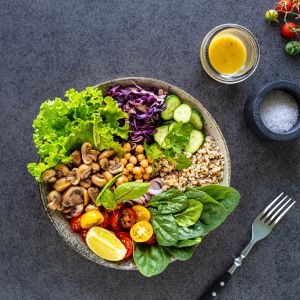English Language Learning through Vegan food
By Neha Vivek, VRG Intern
When teaching English as a second language (ESL), one of the easiest connections is food. Applying the new content to familiar concepts, such as food, can make English easier to grasp.
Younger Students
Describing food using English is a great way to connect sensations with words. For instance, giving someone a chile for spicy or sugar for sweet connects the flavor they taste with the English words, building connections in their mind to pre-existing ideas of those flavors. In a similar manner, teachers can also bring food such as fruit and ask students to describe the texture, color, and flavor of foods in English.
If physical food isn’t available, students could cut out photos from old magazines or make flashcards to connect the image of the food with the English word for it. To make it a game, teachers can make a food pictionary, asking students to draw foods for students to guess the English names of the food.
Food bingo could be a fun activity where you read out the English words for students and ask them to match them to pictures on a bingo card.
Middle Schoolers
With the prevalence of food idioms in English, a fun activity for middle school students to understand culture would be asking them to explain what they think phrases like “in a nutshell” and “spice things up” mean.
Yasmin Radbod, a teacher of ESL, also recommended preparing dishes or asking students to rotate preparing dishes from their culture for students to taste test it and write adjectives to describe the taste. Then each group can present and as a whole classroom compare students’ experiences and vocabulary, and the teacher can educate what the food is. Students can also guess the ingredients in a dish when taste testing.
High Schoolers
For more advanced students, translating a recipe from their native language to English and following the recipe would be a fun activity. Through recipe translation, students learn transition words by writing step-by-step instructions and using cooking vocabulary like slice, dice, chop, and stir.
Students can host a potluck where they can bring the recipe written in English or create a grocery list for a shopping trip. For vegan food, this would especially be a great activity since vegan food is present in many different cuisines, opening students to unique words associated with that meal. For instance, when making Indian curries such as Chana Masala, students learn English words for chickpeas and curry powder, which they can connect with their native language.
Food is the thread that connects everything. Learning ESL through food can immerse students further in the culture and open them up to a new world of food and vocabulary. Using multiple senses (smell, taste, and sight) can help students of all age groups. After all, we always remember a good meal.
Related articles by The Vegetarian Resource Group:
Education Materials and Lesson Plans: https://www.vrg.org/family/kidsindex.htm#plans
Ethnic Cuisine ideas: https://www.vrg.org/journal/CookingAndRecipes.htm#cr-ethnic-cuisine

